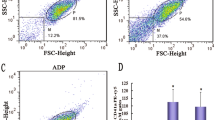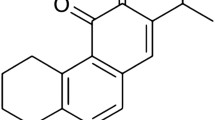Summary
The opening of mitochondrial permeability transition pore (MPTP) plays a critical role in platelet activation. However, the potential trigger of the MPTP opening in platelet activation remains unknown. Inflammation is the crucial trigger of platelet activation. In this study, we aimed to explore whether and how the important inflammatory cytokine IL-17 is associated with MPTP opening in platelets activation by using MPTP inhibitor cyclosporine-A (CsA). The mitochondrial membrane potential (ΔΨm) was detected to reflect MPTP opening levels. And the platelet aggregation, activation, and the primary signaling pathway were also tested. The results showed that the MPTP opening levels were increased and Δψm reduced in platelets administrated with IL-17. Moreover, the levels of aggregation, CD62P, PAC-1, P53 and the phosphorylation of ERK2 were enhanced along with the MPTP opening in platelets pre-stimulated with IL-17. However, CsA attenuated these effects triggered by IL-17. It was suggested that IL-17 could induce MPTP opening through ERK2 and P53 signaling pathway in platelet activation and aggregation.
Similar content being viewed by others
References
Jobe SM, Wilson KM, Leo L, et al. Critical role for the mitochondrial permeability transition pore and cyclophilin- D in platelet activation and thrombosis. Blood, 2008,111(3):1257–1265
Remenyi G, Szasz R, Friese P, et al. Role of mitochondrial permeability transition pore in coated-platelet formation. Arterioscler Thromb Vasc Biol, 2005,25(2):467–471
Liu F, Gamez G, Myers DR, et al. Mitochondrially mediated integrin alpha(II b)beta(3) protein inactivation limits thrombus growth. J Biol Chemist, 2013,288(42):30 672–30 681
Kroemer G, Reed JC. Mitochondrial control of cell death. Nat Med, 2000,6(5):513–519
Qiao S, Olson JM, Paterson M, et al. MicroRNA-21 mediates isoflurane-induced cardioprotection against ischemia-reperfusion injury via Akt/Nitric oxide synthase/mitochondrial permeability transition pore pathway. Anesthesiology, 2015 Aug 7. [Epub ahead of print]
Liu G, Wang ZK, Wang ZY, et al. Mitochondrial permeability transition and its regulatory components are implicated in apoptosis of primary cultures of rat proximal tubular cells exposed to lead. Arch Toxicol, 2015 June 17. [Epub ahead of print]
Wagner DD, Burger PC. Platelets in inflammation and thrombosis. Arterioscler Thromb Vasc Biol, 2003,23(12): 2131–2137
Maione F, Cicala C, Liverani E, et al. IL-17A increases ADP-induced platelet aggregation. Bioc Biop Res Commun, 2011,408(4):658–662
Zhang S, Yuan J, Yu M, et al. IL-17A facilitates platelet function through the ERK2 signaling pathway in patients with acute coronary syndrome. Plos One, 2012,7(e406417)
Leytin V, Allen DJ, Mutlu A, et al. Mitochondrial control of platelet apoptosis: effect of cyclosporine-A, an inhibitor of the mitochondrial permeability transition pore. Lab In vest, 2009,89(4):374–384
Verhoeven AJ, Verhaar R, Gouwerok E, et al. The mitochondrial membrane potential in human platelets: a sensitive parameter for platelet quality. Transfusion, 2005,45(1):82–89
Dragon S, Saffar AS, Shan L, et al. IL-17 attenuates the anti-apoptotic effects of GM-CSF in human neutrophils. Mol Immunol, 2008,45(1):160–168
Paintlia MK, Paintlia AS, Singh AK, et al. Synergistic activity of interleukin-17 and tumor necrosis factor-alpha enhances oxidative stress-mediated oligodendrocyte apoptosis. J Neurochem, 2011,116(4):508–521
Davi G, Patrono C. Mechanisms of disease: Platelet activation and atherothrombosis. New Engl J Med, 2007, 357(24):2482–2494
Ruggeri ZM. Platelets in atherothrombosis. Nat Med, 2002,8(11):1227–1234
Mattheij NJ, Gilio K, van Kruchten R, et al. Dual mechanism of integrin alpha II bbeta3 closure in procoagulant platelets. J Biol Chem, 2013,288(19): 13 325–13 336
Wang Z, Cai F, Hu L, et al. The role of mitochondrial permeability transition pore in regulating the shedding of the platelet GPIbalpha ectodomain. Platelets, 2014,25(5): 373–381
Burger PC, Wagner DD. Platelet P-selectin facilitates atherosclerotic lesion development. Blood, 2003,101(7): 2661–2666
Vaseva AV, Marchenko ND, Ji K, et al. p53 opens the mitochondrial permeability transition pore to trigger necrosis. Cell, 2012,149(7):1536–1548
Karbach S, Croxford AL, Oelze M, et al. Interleukin-17 drives vascular inflammation, endothelial dysfunction, and arterial hypertension in psoriasis-like skin disease. Arterioscler Thromb Vasc Biol, 2014,34(12):2658–2668
Bonini P, Cicconi S, Cardinale A, et al. Oxidative stress induces p53-mediated apoptosis in glia: p53 transcription-independent way to die. J Neurosci Res, 2004,75(1):83–95
Gogna R, Madan E, Keppler B, et al. Gallium compound GaQ(3)-induced Ca(2+) signaling triggers p53-dependent and -independent apoptosis in cancer cells. Br J Pharmacol, 2012,166(2):617–636
Lemarie A, Lagadic-Gossmann D, Morzadec C, et al. Cadmium induces caspase-independent apoptosis in liver Hep3B cells: role for calcium in signaling oxidative stress-related impairment of mitochondria and relocation of endonuclease G and apoptosis-inducing factor. Free Radic Biol Med, 2004,36(12):1517–1531
Choo HJ, Saafir TB, Mkumba L, et al. Mitochondrial calcium and reactive oxygen species regulate agonist-initiated platelet phosphatidylserine exposure. Arterioscler Thromb Vasc Biol, 2012,32(12):2946–2955
Kumari S, Chaurasia SN, Nayak MK, et al. Sirtuin inhibition induces apoptosis-like changes in platelets and thrombocytopenia. J Biol Chem, 2015,290(19):12 290–12 299
Bhagatte Y, Lodwick D, Storey N. Mitochondrial ROS production and subsequent ERK phosphorylation are necessary for temperature preconditioning of isolated ventricular myocytes. Cell Death Dis, 2012,3:e345
Li DW, Liu JP, Mao YW, et al. Calcium-activated RAF/MEK/ERK signaling pathway mediates p53-dependent apoptosis and is abrogated by alpha B-crystallin through inhibition of RAS activation. Mol Biol Cell, 2005,16(9):4437–4453
Author information
Authors and Affiliations
Corresponding author
Additional information
The author contributed equally to this work.
This project was supported by the National Natural Science Foundation of China (Nos. 81370425, 81470502, and 81400283).
Rights and permissions
About this article
Cite this article
Yuan, J., Ding, Pw., Yu, M. et al. IL-17 Induces MPTP opening through ERK2 and P53 signaling pathway in human platelets. J. Huazhong Univ. Sci. Technol. [Med. Sci.] 35, 679–683 (2015). https://doi.org/10.1007/s11596-015-1489-z
Received:
Revised:
Published:
Issue Date:
DOI: https://doi.org/10.1007/s11596-015-1489-z




